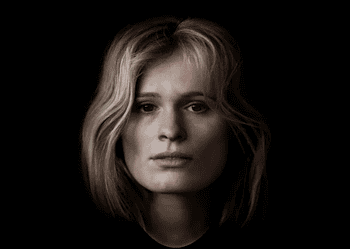New research could help us understand how the brains of autistic people have a harder time recognizing emotions in facial expressions.

Facial expressions are one of the most important ways that people convey their emotions to those around them. Smiles are a good indicator of happiness; eye-rolls are a pretty reliable sign that someone is becoming frustrated. Autistic people, however, can have a difficult time actually picking up on these displays.
We don’t really know why this is. New research focusing on artificial intelligence could help us finally find out why.
Inner workings of the brain
As far as we know, there are two brain areas that may explain where the differences in processing between the typical and autistic brains reside. One of them is the inferior temporal (IT) cortex, which handles facial recognition. Another is the amygdala, which takes in information from the IT cortex and interprets the emotional content of the expressions it perceives.
In order to understand to what extent these two areas are involved in the differences in processing, Kohitij Kar, a research scientist in the lab of MIT Professor James DiCarlo drew on previous research. One of the studies he investigated involved showing the images of faces to autistic adults and neurotypical controls. These images were generated by software that imparted them with different levels of happiness or fear; the participants were asked to judge if each face expressed happiness. Compared to the controls, autistic adults required higher levels of happiness in the faces in order to correctly perceive it.
The other study he drew upon involved the recording of neuronal activity in the amygdalas of people undergoing surgery for epilepsy, while they performed the face task. This paper reported that a patient’s neural activity could be used to predict their judgment on each face.
For the study itself, Kar created an artificial neural network, a computer system that mimics the architecture of our brains, and is organized in several layers of computation. It trained it to perform the same tasks. The network’s behavior on the emotion-recognition task was very similar to that of the neurotypical controls. Then, Kar set about dissecting it to understand how it performed its job, and to find clues as to why autistic adults interpret emotion in facial expressions differently from neurotypical individuals.
First, he reports that the network’s responses could be made to most closely resemble those of autistic participants when its output was based on the last layer of the network. This layer most closely mimics the IT cortex and sits at the end of the visual processing pipeline in primates, he explains, citing previous research.
Secondly, Kar looked at the role of the amygdala. Working with the previously-recorded data and accounting for it in the output of its network, in which the effect of the IT cortex had already been quantified. This showed that the amygdala has a very small effect on its own. Together, these two findings point to the IT cortex being heavily involved in the differences between neurotypical controls and autistic adults.
He further explains that his network could help in selecting images that would be more efficient for the purposes of diagnosing autism.
“These are promising results,” Kar says. Better methods will surely be developed “but oftentimes in the clinic, we don’t need to wait for the absolute best product.”
To validate the findings, he trained separate neural networks to match the choices of neurotypical controls and autistic adults. For each, he quantified how strong the connections between the final layers and the decisional nodes were; those in the ‘autistic network’ were weaker than in the network matching neurotypical responses. This, he explains, points to the neural connections that interpret sensory data being more ‘noisy’ in autistic adults.
Such a view was further reinforced by Kar adding various levels of fluctuation (‘noise’) in the workings of the final layer of the network modeling autistic adults. Within a certain range, this added noise greatly increased how closely the network’s responses matched those of autistic adults. Adding it to the control network had a much weaker effect in aligning its answers to those of neurotypical adults.
Although they are based on the workings of computers, the findings strongly point us toward answers regarding the differences between data processing in neurotypical and autistic brains.
The paper “A computational probe into the behavioral and neural markers of atypical facial emotion processing in autism” has been published in The Journal of Neuroscience.






